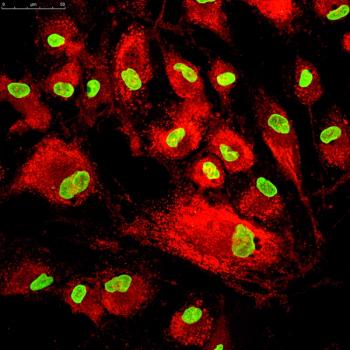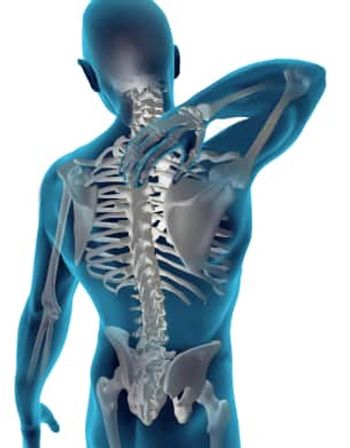
Rare Disease
Latest News
Latest Videos

CME Content
More News

Physicians should consider measuring anti-endothelial cell antibodies in patients with polycythemia vera, the investigators suggested.

Study data are mixed, but some evidence suggests the administration of vitamin D may work as a low-risk prophylactic against graft-versus-host disease (GVHD).

Preventing graft-versus-host disease (GVHD) after allogeneic stem cell transplant is a key aspect of patient management, but current cyclosporine concentration guidelines may not be sufficient, according to a recent study.

A recent study aimed to provide insight and guidance for managing graft-versus-host disease in patients after liver transplantation.

A recent study found positive associations between the organic matter component of particulate matter and disease aggravation in amyotrophic lateral sclerosis (ALS).

A small study aimed to increase the likelihood of detecting minor neurological symptoms of spinal muscular atrophy via a combination of tests specifically suited to newborns.

A survey of blood and bone marrow transplant patients found that many who fit current criteria for ocular graft-versus-host disease have not been diagnosed.

Fine-tuning clinical phenotypes and identifying effective treatments remain challenging in chronic lung allograft dysfunction (CLAD) after lung transplantation and chronic graft-versus-host disease (GVHD) after allogeneic hematopoietic stem-cell transplantation.

A retrospective study assessed hospital readmission rates in patients with sickle cell disease and acute chest syndrome who took angiotensin-converting enzyme inhibitors or angiotensin II receptor blockers vs those who did not.

In an effort to bolster development of treatments for rare diseases, the FDA announced the creation of the new Accelerating Rare disease Cures (ARC) program.

Polycythemia vera and essential thrombocythemia are both slow-progressing conditions and treated mainly with symptom management, but novel agents and gene targets have changed the landscape in recent years.

On this episode of Managed Care Cast, Ari D. Panzer, BS, lead author and researcher, then at Tufts Medical Center—now at Duke University—discusses the findings from his team’s investigation into coverage decisions by health plan insurers of the 66 drugs approved by the FDA in 2018.

After a median follow-up of 535 days, analysis showed that recurrent acute graft-versus-host disease (RaGVHD) carried several implications for survival, leading the researchers to call for further risk stratification of aGVHD.

Previous studies have shown ruxolitinib effective in symptom relief and hematocrit control for hydroxyurea-resistant polycythemia vera, but its role in disease progression is not yet clear.

The findings suggest that the tool can be used to not only assess cognitive impairment in Huntington disease (HD) but also to detect brain atrophy patterns associated with cognitive status in these patients.

A review of 41 articles indicated that leveraging zinc supplementation in patients with sickle cell disease (SCD) is a safe and potentially effective approach for these patients.

A recent study found that a composite end point developed by the researchers gave a single and simultaneous measurement of the overall benefit of treatment for paroxysmal nocturnal hemoglobinuria (PNH).

The Institute for Clinical and Economic Review (ICER) and researchers at NORC at the University of Chicago released a white paper that looks at the future of affordability and sustainability of drug development for rare disease through the lens of 4 policy proposals.

With responses to current treatments varying among patients with spinal muscular atrophy (SMA), the researchers emphasized the importance of more prognostic markers for improved decision making.

Bernice Kwong, MD, clinical professor of dermatology, Stanford University, talks about how later diagnosis and treatment for graft-versus-host disease (GVHD) affects disease progression and overall patient outcomes.

Acknowledging the small number of genetic reports used in their study, the researchers attribute the scarce amount of data to a lack of resources and limited access to genetic screening across Africa.

A recent report details the first reported case of an osteolytic lesion in polycythemia vera and reviews current literature on osteolytic lesions in myeloproliferative neoplasms (MPNs) overall.

The FDA approved a drug to treat a rare form of childhood epilepsy; uninsured Americans will no longer have access to free COVID-19 tests; a conservation group is suing the Environmental Protection Agency (EPA) over failure to protect rivers from pollution.

The FDA accepts an application for a drug to treat amyotriphic lateral sclerosis (ALS) for review; vaccines have been found to reduce people’s risk for developing long COVID-19; COTA announces Miruna Sasu, PhD, as its new president and CEO.

To enable a more personalized and proactive approach to pediatric antiphospholipid syndrome (APS), investigators assessed electronic medical records of 21 children.

















































